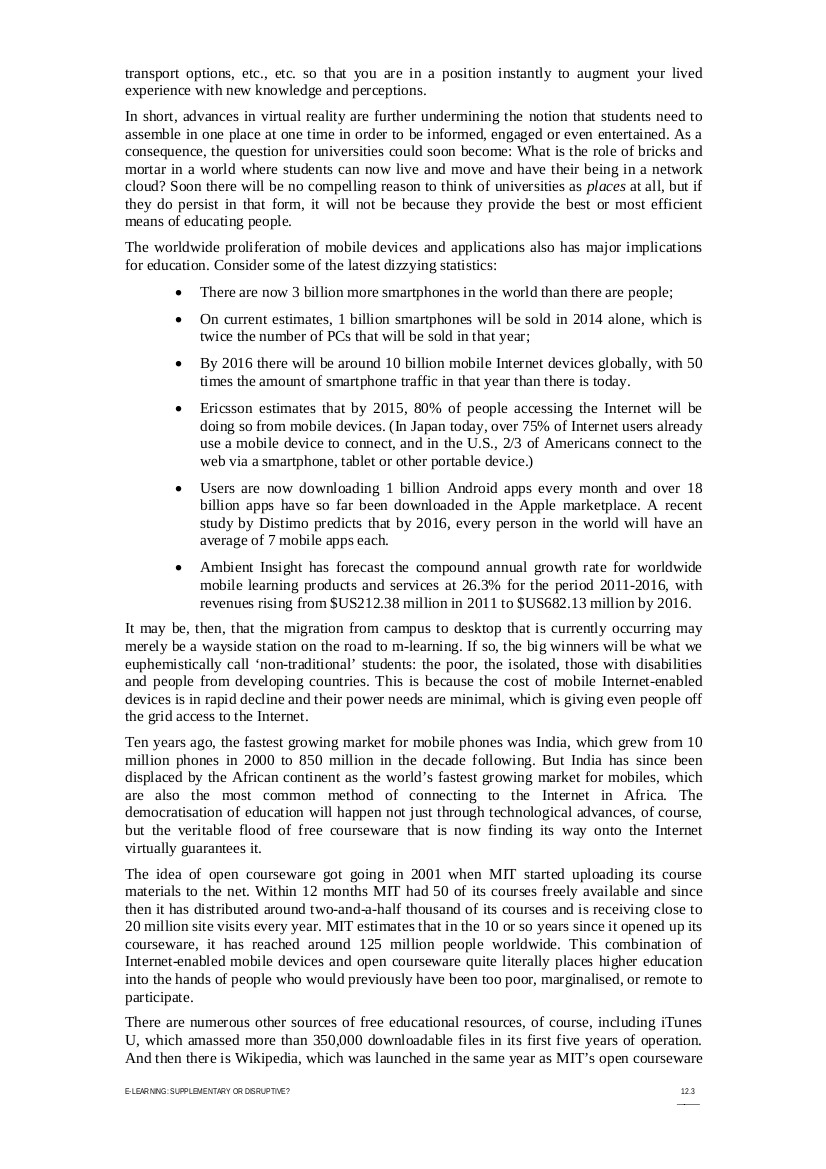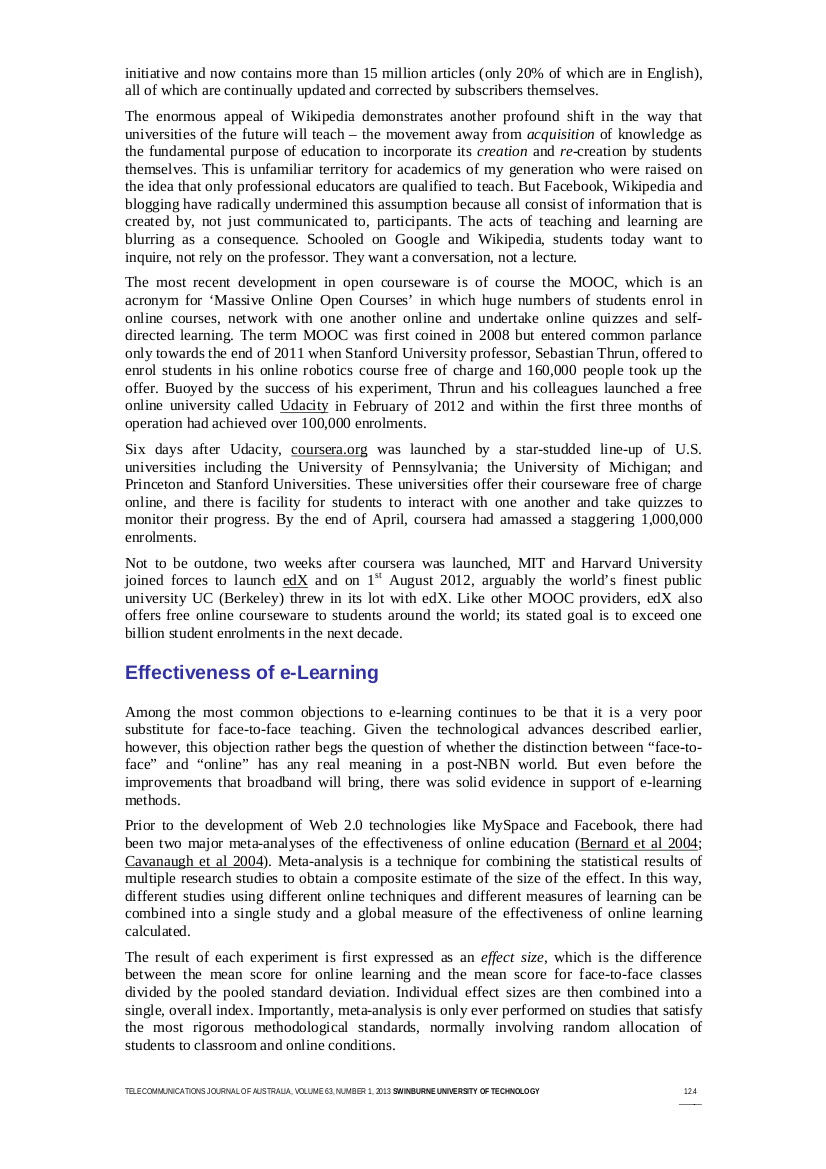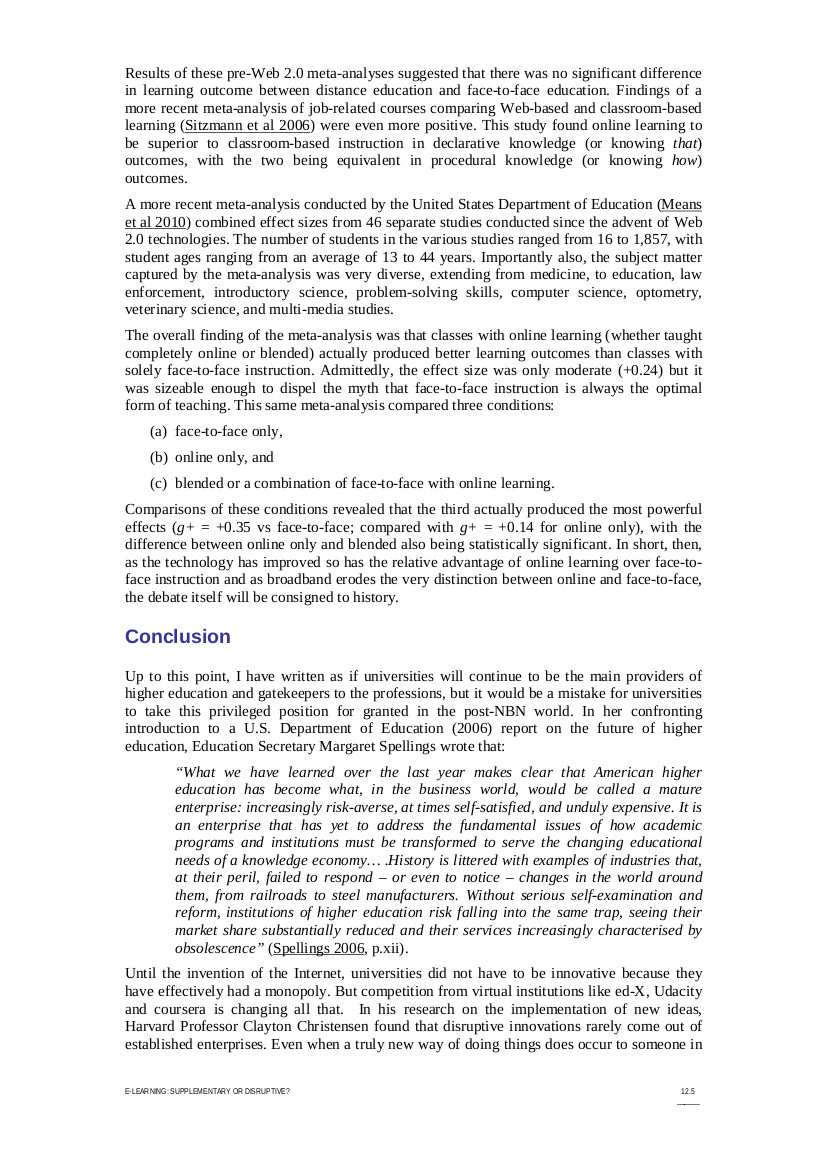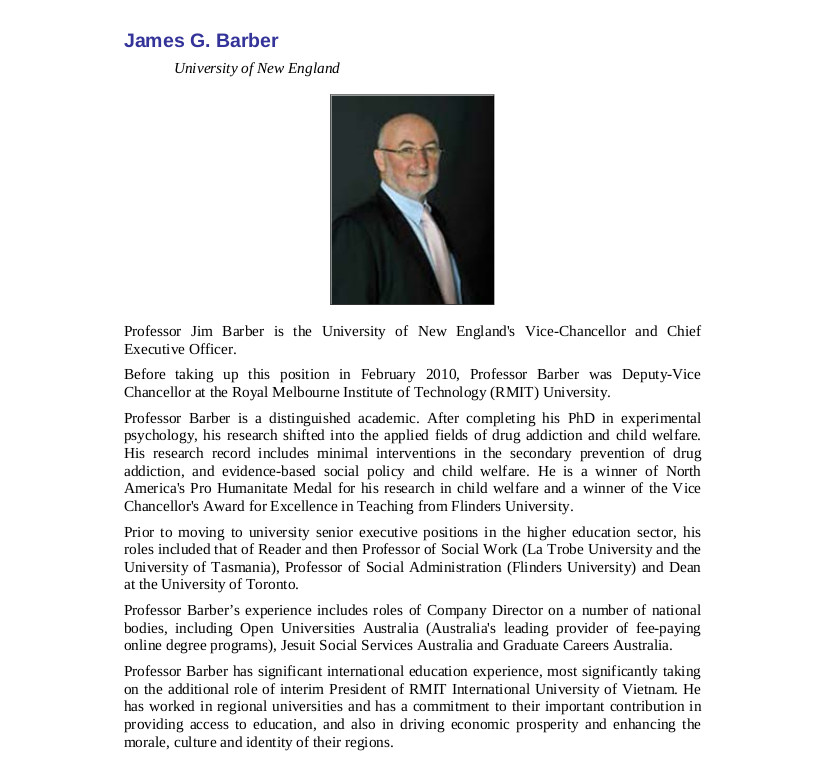Abstract
A recent paper from February 2013 foreshadowing the dynamic changes in e-Learning from Australia’s roll-out of the National Broadband Network.
Introduction
This historic paper is only six years old and was selected to complement the other articles in this issue covering the future of the National Broadband Network (NBN). The NBN roll-out commenced around ten years ago and is well on the way to providing high-speed broadband access to most Australians across the continent. High-speed broadband provides many potential benefits, such as learning via electronic media (e-Learning), but also facilitates disruption, as we have seen with streaming services and social media, threatening some traditional information providers.
The paper (Barber, 2013) was written by James Barber of the University of New England and argues that the NBN will accelerate dramatic changes in education and teaching: in particular, the move away from bricks-and-mortar campuses towards global networks and the rise of mobile learning (m-Learning). When combined with Massive Open Online Courses, m-Learning will result in access to education becoming a universal human right.
Most readers would be aware of the proliferation of devices in the home which are enabled for e-Learning, such as smart TVs, smart mobile telephones and intelligent appliances. Combine this with the seemingly unlimited resources available to consumers on the internet, and you can appreciate the unprecedented learning opportunities, which the NBN will facilitate.
The historic paper concludes with the observations that â[u]ntil the invention of the Internet, universities did not have to be innovative because they have effectively had a monopolyâ (p. 12.5) and â[l]et us hope that Australian universities embrace the opportunity that the NBN provides before it becomes a threat to themâ (p. 12.6).
The disruption to traditional learning will continue as the technical capabilities of appliances expand and the NBN facilitates more diverse access to e-Learning resources.
References
Barber, J. G. (2013). E-Learning: Supplementary or disruptive?, Telecommunications Journal of Australia. 63(1), 12.1-12.6, February.







